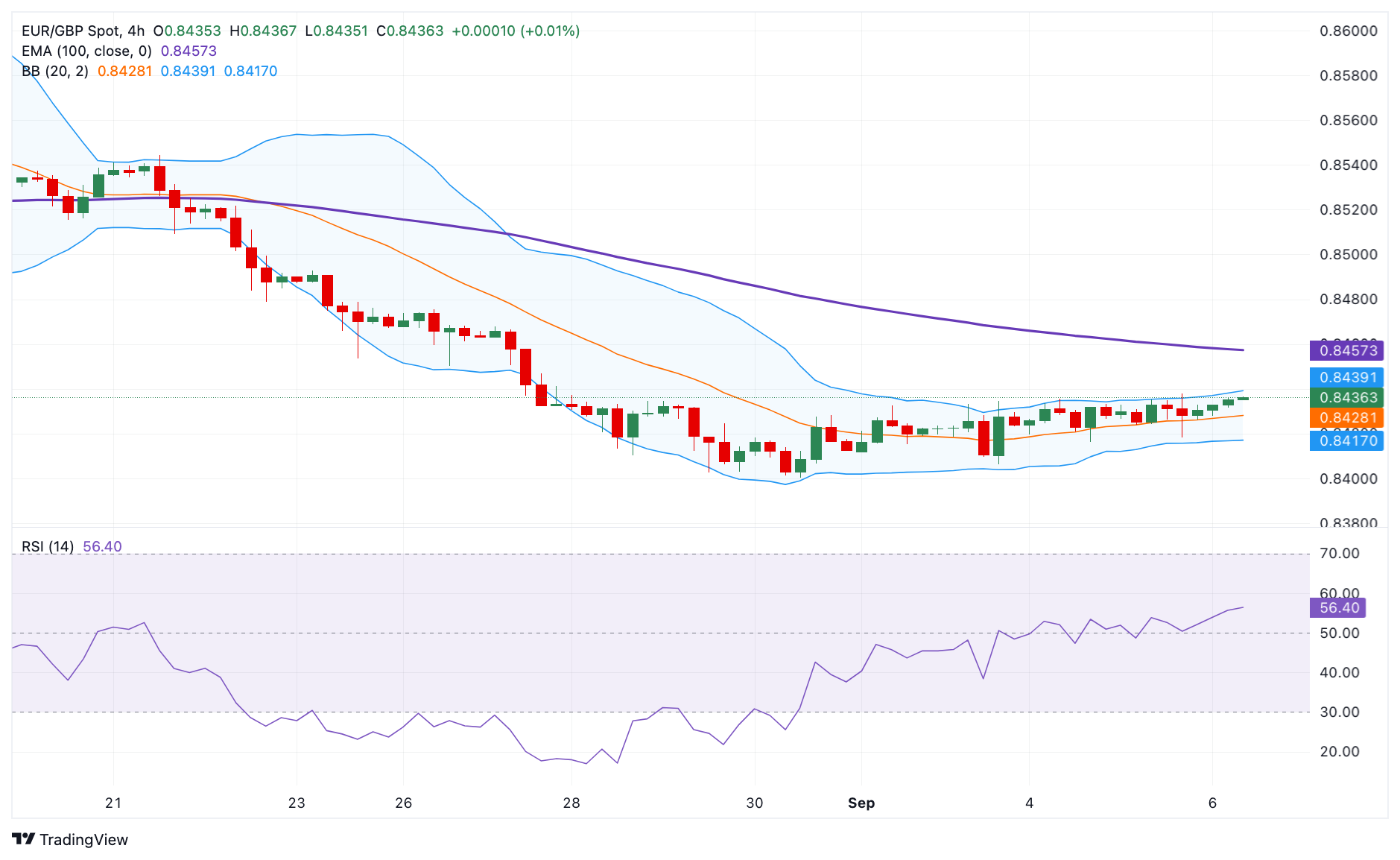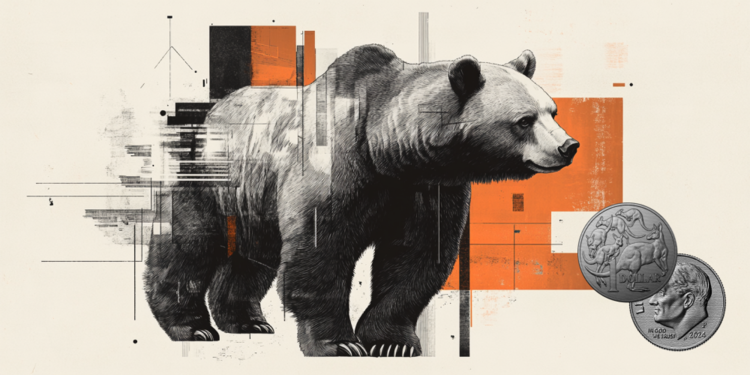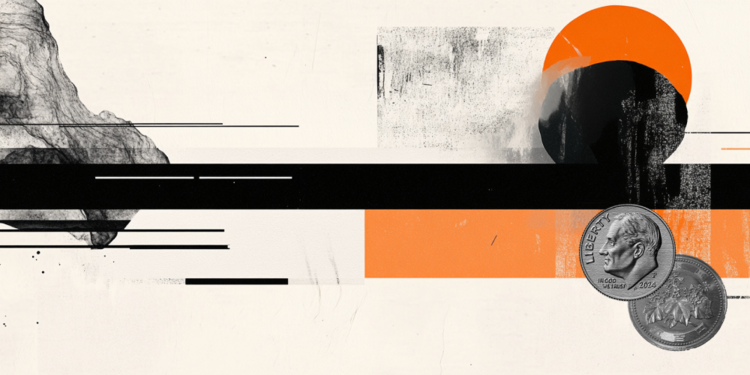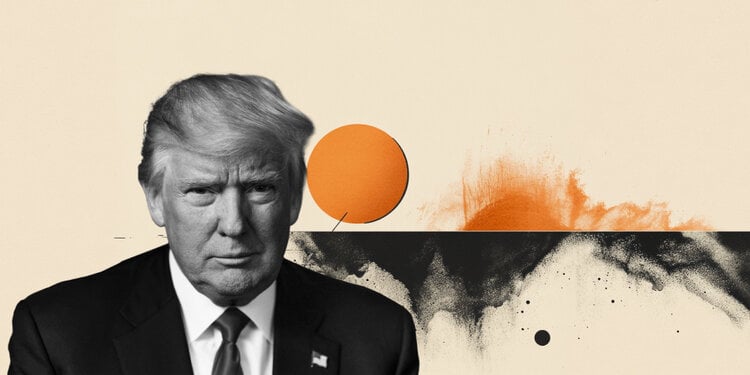- EUR/GBP strengthens to 0.8435 in Friday’s Asian session.
- The pair maintains a bearish vibe below the 100-period EMA, but the RSI indicator shows that further upside cannot be ruled out.
- The immediate resistance level emerges at 0.8440; 0.8417 acts as an initial support level.
The EUR/GBP pair is trading in positive territory for the third consecutive day around 0.8435 during the Asian session on Friday. The Eurozone Gross Domestic Product (GDP) for the second quarter (Q2) will be closely watched, and is estimated to grow by 0.3% QoQ and 0.6% YoY in the second quarter (Q2).
According to the 4-hour chart, the negative outlook for EUR/GBP remains intact as the pair remains below the key 100-period exponential moving average (EMA). However, further upside cannot be ruled out as the Relative Strength Index (RSI) is pointing higher above the midline near 56.0.
The first upside barrier for EUR/GBP emerges at 0.8440, the upper boundary of the Bollinger Band. Further north, the next hurdle is seen at 0.8457. A decisive break above this level will see a rally towards the psychological level of 0.8500.
On the other hand, the initial support level is located at 0.8417, the lower boundary of the Bollinger Band. The potential containment level to watch is the region of 0.8400-0.8405, which represents the round figure and the low of September 3. The additional downside filter to watch is 0.8383, the low of July 17.
EUR/GBP 4-hour chart
GDP FAQs
A country’s gross domestic product (GDP) measures the growth rate of its economy over a given period of time, usually a quarter. The most reliable figures compare GDP with the previous quarter (for example, Q2 2023 with Q1 2023) or with the same period a year earlier (for example, Q2 2023 with Q2 2022).
Annualized quarterly GDP figures extrapolate the quarter’s growth rate as if it were constant for the rest of the year. However, they can be misleading if temporary shocks affect growth in one quarter but are unlikely to last the entire year, as was the case in the first quarter of 2020 with the outbreak of the coronavirus pandemic, when growth plummeted.
A higher GDP result is usually positive for a nation’s currency, as it reflects a growing economy, which is more likely to produce goods and services that can be exported, as well as attract more foreign investment. Similarly, when GDP falls it is usually negative for the currency.
When an economy grows, people tend to spend more, which causes inflation. The country’s central bank then has to raise interest rates to combat inflation, with the side effect of attracting more capital inflows from global investors, which helps the local currency appreciate.
When an economy grows and GDP increases, people tend to spend more, which causes inflation. The country’s central bank then has to raise interest rates to combat inflation. Higher interest rates are negative for Gold because they increase the opportunity cost of holding Gold versus putting the money in a cash deposit account. Therefore, a higher GDP growth rate is usually a bearish factor for the price of Gold.
Source: Fx Street
I am Joshua Winder, a senior-level journalist and editor at World Stock Market. I specialize in covering news related to the stock market and economic trends. With more than 8 years of experience in this field, I have become an expert in financial reporting.








